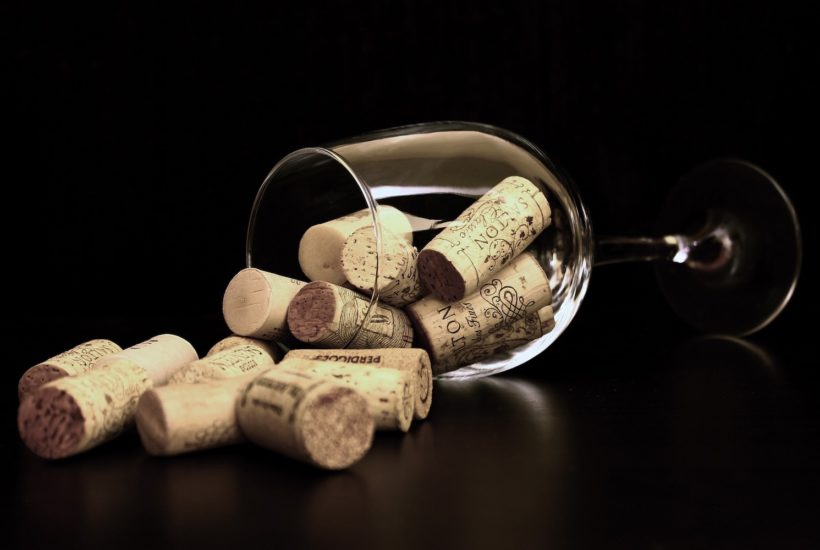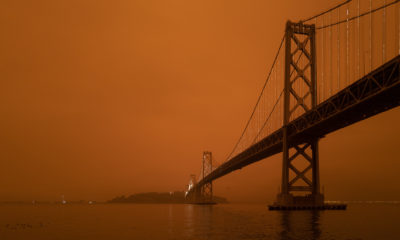Business
Palate Club leading the pack: advancing consumer wine tech
Traditions and subjectivity have long burdened innovation in the wine industry. While those working quietly behind the scenes in winemaking and viticulture have been embracing advances more and more, the consumer side has remained mostly untouched. Now Palate Club are finally doing something about it, showing that matching subjective palates with wine can be solved with AI technology.

Many industries are subject to great amounts of inertia in the face of innovation. Sometimes it’s apprehension over the upheaval that change will cause. In an enterprise environment, implementing new software solutions can often present the opportunity to drive efficiencies and cut costs, but the upfront commitment cost can cause resistance. Migrating data, training staff, initial hardware and licensing costs, etc. The list goes on.
But in a lot of industries, resistance to change is less rational. Quite often new innovations can be viewed with suspicion or even superstition. This is especially true when an industry is steeped in tradition.
One industry that is rife with such superstitions and an unwillingness to adopt advances is the wine industry. The resistance to the screwcap bottle is one such example of an innovation that met resistance in all markets. For years, there were perceptions that wine under cork was just simply better. In fact, these superstitions still exist and the correlation between tradition and resistance is almost obviously evident here—countries like France are still yet to adopt screwcaps in any sort of significant way.
Winemakers have been more open to change
One of the great difficulties in winemaking is controlling the many variables that change the end product. The differences in weather from season to season can mean that every year winemakers are starting their “recipes” from scratch again. Tiny details, like the day and even the hour that the grapes are harvested can have an outsized influence. As can fermentation methods and even the yeast strains used in the fermentation.
With so many variables, winemaking has long been a seat of the pants type of experience, often requiring decades of winemaking experience before consistency is attained. And it is still like this in some corners of the industry, with traditionalists asserting that wine is an art, claiming more analytical methods can result in soulless wines.
But most winemakers are commercial enterprises, after all. This means that most have been quicker to embrace technological advances than wine critics and consumers might have been. Less concerned about living up to the allusions made to their artistic merits and more concerned about producing consistency and quality, the importance of technology has been vital to their existence. Even if the public face of the wine industry has long worked to maintain its image of tradition and artistry, science-driven methods of winemaking integrating meteorology, chemistry and advances in agricultural technology are the reality behind most wines now.
The reality of wine tasting
As with everything in wine, simply tasting a glass of wine is an affair that’s heavily dictated by tradition. Some parts of the process are driven by a striving towards objectivity, such as standardization of wine glasses. Others even have groundings in science. Aerating a wine by swirling it around in a glass releases volatile aromatic compounds, allowing the taster to better sense a wines “nose.”
The lines between the objective and subjective start to get quite blurry here, however. Even when tasters draw from the most basic of standard wine vocabulary, how one taster perceives a wine differs from another. One taster’s “full-bodied wine backed by a harmonious acid-tannin structure” can easily be perceived as “harsh and overpowering” by another.
When taken as an aggregate, however, a lot of this vocabulary has been shown to correlate with measurable qualities and compounds in wine. Aromas can, for example, be used to precisely identify any faults the wine may have. A smell of “burnt match” can indicate an excess of sulphur dioxide, and rotten eggs come from hydrogen sulfide which can even be traced back to specific fungicides used in the vineyard.
But things still get terribly subjective, even when dealing with “faults.” The presence of the infamous Brettanomyces yeast strain often gives a wine very specific odours—barnyard and leather are two descriptors used by wine tasters to describe it. But this particular “fault” is also loved by others. Sometimes the lines between fault and quality are so blurred that some will take their like or dislike on a case-by-case basis.
There is no holy grail of objectivity in wine tasting…
The holy grail of objectivity in wine tasting objectivity has seemed unobtainable. In fact, given the subjectivity in wine tasting, some might question whether a more analytical approach to assessing wines is even merited. Just because we can measure things, it doesn’t necessarily mean we can describe the way it tastes to a consumer any more clearly.
Individual tastes vary almost more than individual wines do. The fact that the Pepsi vs Coke debate even exists serves to illustrate the difficulty of analysing beverages objectively. The world of wine is far more expansive than that of colas, too, only opening up the field of subjective preferences.
…but wine tasting is still ready for technological innovation
As technology advances, the possibilities of what we can do with it grows wider and wider. This has seen rapid advances in personalized experiences. Netflix, Spotify, Amazon, Google… pick any giant on the internet and chances are they’re delivering objectively targeted user experiences in what are otherwise highly subjective fields. The ability of Spotify to recommend music that appeals to every single user, for example, was unthinkable only years ago.
So if Spotify and others are already doing it for music—something as at-once artistic and scientific as wine—why isn’t it already widely deployed in the world of wine?
Palate club sees the opportunity and gets to market first
This question is something Palate Club founders found themselves asking. It’s what motivated them to develop their wine tasting app which works just like Spotify and others do. Of course, the app can’t stream wine like Spotify can with music, although it does tie in nicely with a convenient wine delivery service.
Palate Club realized that there is no objective way to taste wine, even if there are objective ways to measure its qualities. Working from this base, they built their app to register a diverse range of inputs which ultimately result in wines and drinkers being matched with each other in a remarkably precise way.
On Palate Club’s side, they’ll input the objective parameters of the wine. It’s acid levels, tannins, sweetness, etc. The same parameters that winemakers have been precisely controlling for years with science.
Then, on the consumer side, user’s likes and dislikes are used to build highly detailed palate profiles. Derived using AI, these profiles detail how different interplays between the various objective components of a particular wine are perceived by the individual drinker. Palate Club is then able to determine which wines will be most enjoyed by any drinker on their platform, reducing the reliance on subjective wine critic reviews and medals.
__
(Featured image by Adriano Gadini via Pixabay)
DISCLAIMER: This article was written by a third party contributor and does not reflect the opinion of Born2Invest, its management, staff or its associates. Please review our disclaimer for more information.
This article may include forward-looking statements. These forward-looking statements generally are identified by the words “believe,” “project,” “estimate,” “become,” “plan,” “will,” and similar expressions. These forward-looking statements involve known and unknown risks as well as uncertainties, including those discussed in the following cautionary statements and elsewhere in this article and on this site. Although the Company may believe that its expectations are based on reasonable assumptions, the actual results that the Company may achieve may differ materially from any forward-looking statements, which reflect the opinions of the management of the Company only as of the date hereof. Additionally, please make sure to read these important disclosures.

-

 Crypto1 week ago
Crypto1 week agoXRP vs. Litecoin: The Race for the Next Crypto ETF Heats Up
-

 Biotech5 days ago
Biotech5 days agoSpain Invests €126.9M in Groundbreaking EU Health Innovation Project Med4Cure
-

 Crypto2 weeks ago
Crypto2 weeks agoRipple Launches EVM Sidechain to Boost XRP in DeFi
-

 Biotech1 day ago
Biotech1 day agoAdvancing Sarcoma Treatment: CAR-T Cell Therapy Offers Hope for Rare Tumors
























